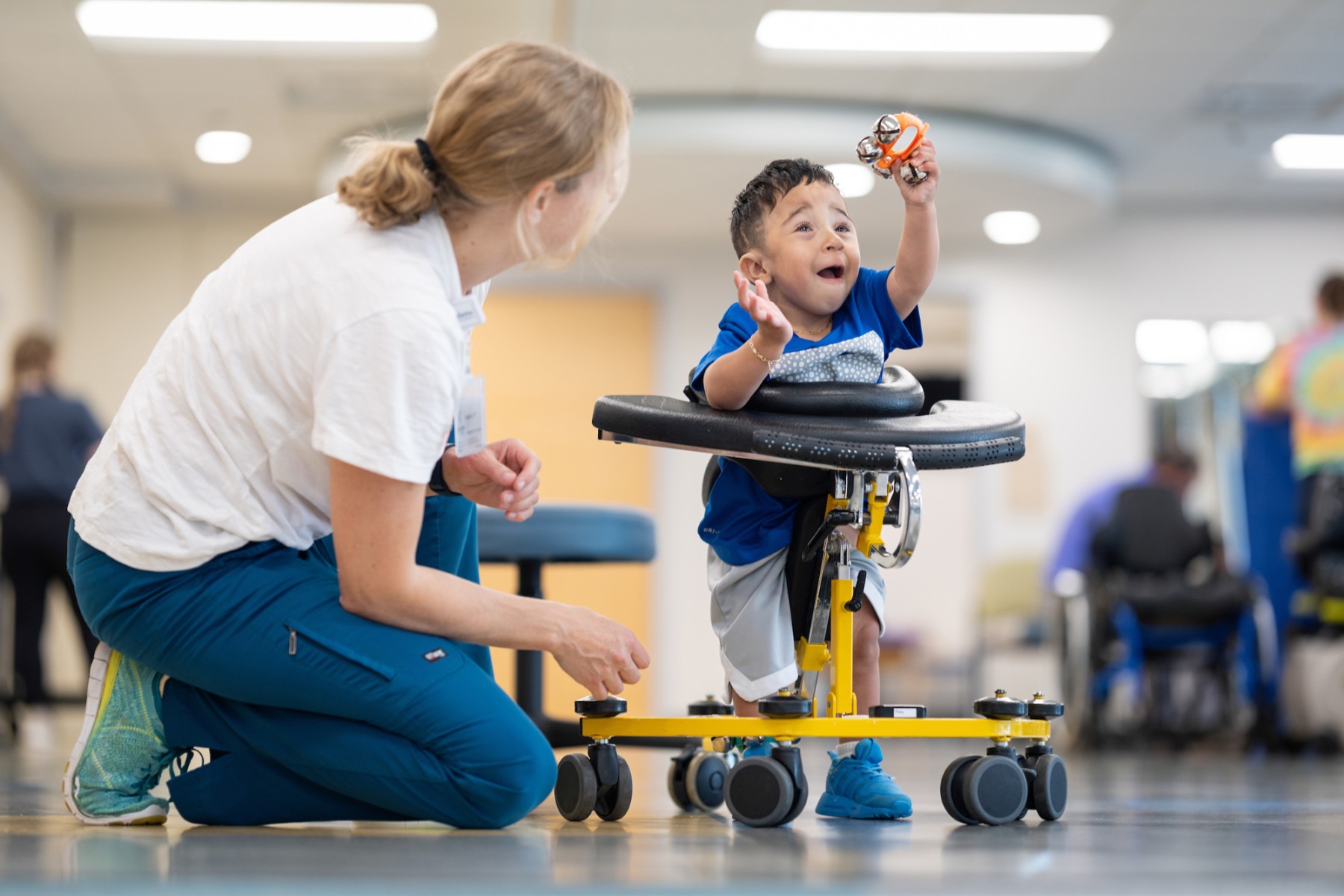What are complex movement disorders?
Complex movement disorders describe any combination of atypical movements that interfere with a person’s desired movements. Persons with complex movement disorders might experience too much or too little movement, or they might have coordination problems.
What are the different types of complex movement disorders?
There are several types of complex movement disorders, but most are categorized as:
- Hypokinetic (too little) movement disorders, which are rare in children.
- Hyperkinetic (too much) movement disorders, which occur more frequently in children than in adults and include unusual or unwanted movements. The most common types of hyperkinetic disorders in children involve involuntary, repetitive movements and vocalizations (tics) or repetitive movements (stereotypies).
Common hyperkinetic disorders include:
Persons who have dystonia have muscles that tighten involuntarily, causing uncontrollable, repetitive, stiff, twisting, or exaggerated motions. Symptoms can range from mild to severe and might interfere with daily activities, depending on which areas of the body are affected.
Dystonia might be caused by:
- Brain injury from low oxygen levels in the blood stream at birth, which causes cerebral palsy
- Genetics—some forms of dystonia are inherited
- Other disorders or conditions—such as severe jaundice after birth, infections or reactions to certain medicines
The most common symptoms of this type of movement disorder are slow, repetitive, involuntary movements of the mouth and tongue. Tardive syndromes can also range from twisting movements of the entire body to quick dance-like (also known as choreatic) movements. Often, persons who have this condition also experience a sense of restlessness.
Tardive syndromes are caused by exposure to certain antipsychotic medicines (such as haloperidol). Because tardive syndromes are caused by medication, the symptoms usually appear after a child has been taking the medication for some time.
The term “chorea” comes from the Greek word meaning “to dance.” This disorder causes brief, irregular and involuntary movements that appear to flow from one muscle to the next in different parts of the body.
The form of chorea seen most often in children is called Sydenham’s chorea. It is extremely rare and occurs after strep (streptococcal) infections. Other rare causes of chorea in children include side effects from medication or toxins, stroke, and genetic metabolic conditions.
What causes complex movement disorders?
Many factors might increase a person's risk for developing a complex movement disorder. Some of the most common include:
- Family history
- Birth complications
- Brain injury
- Side effects from medication
- Infection, trauma, tumors or stroke
- Other medical conditions and disorders
What are the symptoms of complex movement disorders?
Because the symptoms and effects of complex movement disorders vary depending on the type of disorder, the impact on quality of life differs from person to person.
Some common symptoms and effects of complex movement disorders include:
- Difficulty walking or running
- Depression, anxiety and social isolation
- Sleep disorders
- Speech and language difficulties
- Difficulty swallowing, chewing or eating
- Difficulty writing, dressing, and manipulating small objects
How are complex movement disorders diagnosed and treated?
Complex movement disorders can be difficult to diagnose and treat. That’s why Gillette Children’s established a Complex Movement Disorders Clinic which includes specialists from neurology, rehabilitation medicine, neurosurgery, orthopedics, and rehabilitation therapies.
In most cases, specialists can make a diagnosis by visually examining a person's movements. Because some complex movement disorders are caused by an underlying health condition or injury, however, additional testing and evaluation might be done to ensure that other medical conditions don’t need to be addressed.
If your child is being evaluated for complex movement disorders, your child might have common diagnosis tests like:
- Blood and urine analysis
- Genetic or DNA tests
- Gait and motion analysis
- Rehabilitation therapies evaluation
- Neurodiagnostic testing, including sleep studies (polysomnography) and electroencephalograms (EEGs)
- Neuropsychological evaluations—to address concerns with attention, memory, learning, and problem-solving
- Nutrition and feeding evaluations, which might include swallowing studies
- Radiology and imaging tests
- A developmental assessment conducted by a neurologist, pediatric rehabilitation medicine specialist, and neurosurgeon
Some of the most common treatments and therapies associated with complex movement disorders are:
Complex Movement Disorder Services at Gillette Children's
If someone has a complex movement disorder, your family might see a wide range of specialists who work together to provide a comprehensive treatment plan using state-of-the-art technology.
Your care team at Gillette can help you determine if and when to work with experts in:
- Neurology
- Pediatric orthopedics
- Rehabilitation therapies
- Sleep medicine
- Child life
- Neuropsychology
- Nutrition and feeding
- Psychology
- Neuropsychology
- Social work
- Therapeutic recreation
Our team of complex movement disorder specialists strives to help your child improve function and enhance their quality of life.
 Home Page
Home Page



